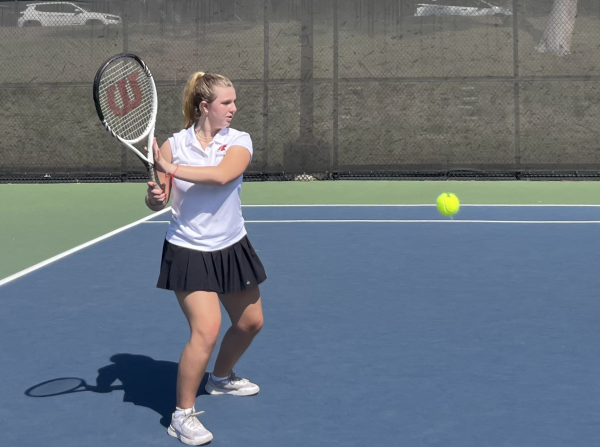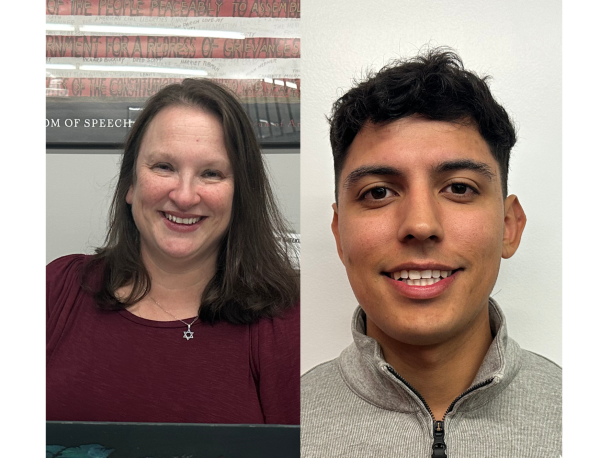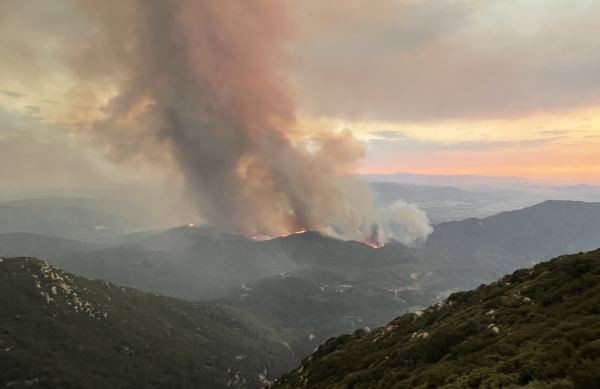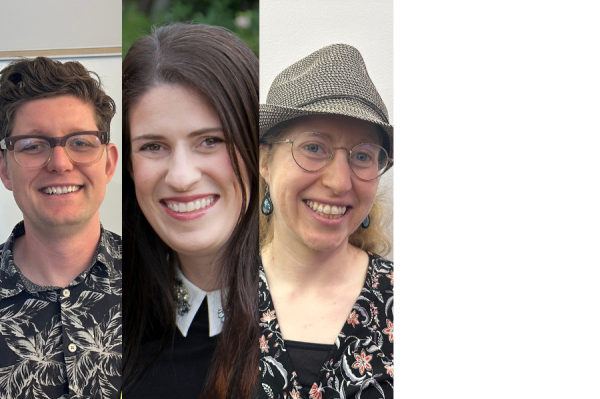Amidst dancing and ‘pure happiness,’ alumni saw tragedy unfold on Israel’s Mount Meron
At least five Shalhevet grads studying in yeshivot were present when Lag B’Omer celebration turned deadly
May 25, 2021
Around 1:15 a.m. on April 30, Sam Rubanowitz tried to make his way down an overcrowded, slippery exit pathway from the Lag B’Omer celebration at Northern Israel’s Mount Meron.
Twenty minutes earlier, 45 people lost their lives, apparently in a forward crush of exiters who were unable to stop moving after some fell and became trapped underneath them. Some called it a stampede, although no one was running.
“The pathway which I had gone was the exact pathway that the stampede happened, around 15 to 20 minutes before I got there,” said Sam in an interview. “If I had chosen to leave earlier, I could’ve been involved in the stampede.”
Around the same time, Ari Schlacht found himself surrounded by yelling and red lights flashing as he came across the night’s disastrous result that Sam would only learn about later on.
“One by one, as we’re standing by the top, you see the crowd would split open for a Hatzalah member who would be walking with a stretcher and like, a little kid lying on it, not moving,” said Ari. “It pretty much just looks like your average horror movie.”
Sam and Ari, alumni from Shalhevet’s class of ‘20, are both in Israel studying in yeshiva this year, Sam at Yeshivat Har Etzion and Ari at Yeshivat HaKotel. They were among at least five Shalhevet alumni who were present that night at what is said to have been the deadliest civil disaster in Israel’s history.
Lag B’Omer is the 33rd day of the Jewish semi-mourning period titled the Omer, which mourns the death by plague of thousands of students of Rabbi Akiva, a first-century Jewish scholar and one of the greatest rabbinic sages; Lag B’Omer marks the day the plague ended.
The day has a related meaning honoring Rabbi Shimon Bar Yochai, a famous student of Rabbi Akiva and author of the Zohar, the central text of Jewish mysticism. Lag B’Omer is said to be the anniversary of his death — but instead of mourning, the Jewish people celebrate to fulfill his wish to have his yahrzeit represent his joy.
Many Jews celebrate by lighting bonfires and some, including many in Israel, make a pilgrimage to Rabbi Shimon Bar Yochai’s tomb on Mount Meron. This year, about 100,000 were there.
Yeshiva students from all over Israel have joined Haredim at Mount Meron’s Lag B’Omer festival for decades to partake in this popular component of the “Israel experience.”
“This is the ultimate way to spend Lag B’Omer in Eretz Yisrael,” said Sam. “This is Lag B’Omer — there’s no other place in the world like this and I got to be there, be involved, dance, and be with everyone.”
Sam’s night started out as expected. He arrived from his yeshiva in Gush Etzion in the West Bank at a crowded Mount Meron a little past 9 pm, where he walked around and danced, soaking in the religious, joyful atmosphere.
He then made his way toward one of the bonfires on the mountain to be lit at 12:30 am next to the area where the tombstone of Rabbi Shimon bar Yochai is located. He squeezed his way through the crowd to meet a friend in the main courtyard underneath the fire and they began to dance.
Half an hour to 40 minutes later, Sam decided to leave Mount Meron and return to his yeshiva.
“I started to walk down this sloping pathway, and it was slippery,” he said. “It seemed like there were drinks that people dropped there, because they were giving out grape juice, wine, and water.”
He then noticed many injured people lined up on the side of the path, being tended to by others.
“I thought that this was just the regular situation in Meron — where people would pass out because of overcrowding or dehydration or something,” he said.
Then he saw members of Hatzalah, which is a volunteer-based emergency medical service, hastily trying to clear the pathway. Sam had to turn around and find a different exit.
Beyond that exit, he saw Hatzalah members performing CPR on people laid on the ground with their shirts open.
“There was a lot of screaming,” he said.
According to media reports, the office of Israel’s State Comptroller has announced that it will open an investigation to determine exactly what happened. Sam believes it was a domino effect caused by the slippery ground.
He said a large number of people were trying to exit an area of Mount Meron all at once through a narrow pathway, and as “one person fell, then a few people, people just keep going and then they would fall on top of others — causing 45 people to die.”
But at that point in the night, Sam was still oblivious to the tragedy that had just unfolded.
“I made my way out — I still didn’t know what was going on, as far as the actual stampede that happened,” said Sam. “I thought this was just the general situation that would happen because I’ve been told that it gets pretty crazy and very dangerous. Every year they have Ichud Hatzalah set up because they know things can happen, usually minor things.”
Sam is still unsure of how he found out about the disaster. While he was exiting, an Israeli singer made an announcement urging everyone to say the Shema, a Jewish prayer, for those killed that night.
“I’m not exactly sure how I found out – it could have been from someone standing next to me, it could’ve been from this announcement by the singer,” he said.
Sam couldn’t find a way to leave for a while as all of the expected bus lines were stopped. Some of the estimated 100,000 participants that night were gathered on the side of the road trying to find a way home.
Sam walked along the road looking for a bus to get on, and eventually found one that would take him and many others out of the area.
Ari Schlacht watched the situation unfold from the top of the mountain.
Ari and around 80 other people from his yeshiva in the Old City of Jerusalem celebrated Lag B’Omer at Mount Meron that night.
Around the time of the incident, Ari was in a big, crowded tent with his friends when he and around 20 others wanted to walk up the mountain.
“It was so crowded that when you walk around you have to either hold hands or make like a chain with your guys, so that way you can’t get pulled out and stuck,” said Ari.
On their way up, he heard ambulances but didn’t think much of it.
Then, rumors started circulating that a bleacher had fallen.
“Everyone was like ‘Oh that’s crazy, but let’s go check it out,’” he said.
But as Ari watched from the top of the mountain, he saw Hatzalah members rushing through the crowd when he noticed a child motionless on a stretcher.
“You just see people after people on stretchers being pulled out, and nobody knew where it was coming from,” he said.
Eventually, he got in touch with a friend who was closer to the incident.
“He told me that it was, like, a crush,” Ari said. “I don’t think a ‘stampede’ is a fair word because a stampede is kind of dealing with animals. Nobody like, ran anybody over, it just– happened. People got pushed, and people fell, and nobody could have really controlled it.”
He and his friends then started their way back down the mountain, passing Haredi men who were heading upward but were blocked by a chain of Hatzalah members and police — all of them female, because officials were using the laws of shomer negiah, which forbid most physical contact between members of the opposite sex, to hold back the crowds.
“They took all the female members they had to block off the area where it happened,” Ari said. “Because the Haredim wouldn’t listen, and [so] and they formed, like, a female wall, so the Haredim couldn’t go through because of shomer negiah.”
Ari soon made his way down the mountain and got onto one of the first buses back to Jerusalem at around three in the morning.
“Everybody on the bus tried to call people and other people and everybody had flip phones because they’re ultra-Orthodox, so we were lending our phones to half the people there to use it,” said Ari.
Ari fell asleep on the bus until he arrived back in Jerusalem at around 7 or 8 in the morning, not realizing the severity of what he had witnessed until Shabbat.
“Nobody knew how to grieve or how to think about it because nobody knew what happened, nobody knew how it happened, it was still a mystery to most people,” said Ari.
“That I think was the most painful to most people, because nobody could blame anybody. Not even ourselves. You just couldn’t blame anybody.”
What was supposed to be a joyous celebration had become a dark tragedy that took the lives of 45 people, including 12 yeshiva students.
Donny Morris z”l, a 19-year-old student from Bergenfield, N.J., spending his gap year at Yeshivat Sha’alvim, was one of them.
Ari had met Donny a few weeks before Lag B’Omer through mutual friends.
“It made me realize that there’s now somebody from the yeshiva world who’s missing,” Ari said. “It makes you realize how fragile life is in a very real way.”
Donny’s death struck yeshiva students all around Israel. According to Sam, a few thousand people attended in person and over 30,000 people watched virtually as his funeral took place on a grass field beside Sha’alvim.
Yeshivat Har Etzion provided transportation for students, and Sam felt it was very important for him to attend. Different yeshivot went in groups.
“Seeing the people that knew him in my yeshiva who were crying was very affective, and hearing the [pain] of the parents and the family and his [friends],” said Sam, “coupled with the fact that this could have been me if I had acted differently.”
“His father spoke about walking with his son to shul and learning with him,” Sam said. “That stood out to me the most, because I would do the same thing with my father.”
At Shalhevet, Donny Morris’ death hit close to home for Dean of Students Rabbi Ari Schwarzberg. Rabbi Schwarzberg was once a student at Sha’alvim himself, and he also grew up in the same community in New Jersey as Donny did.
For that and other reasons, it felt like he knew him.
“Donny is from our community — he’s from the Modern Orthodox community,” said Rabbi Schwarzberg. “I know what his life looked like, I know what his high school looks like… I know Donny without knowing Donny.”
Rabbi Schwarzberg viewed the funeral online, and as a parent couldn’t stop thinking about Donny’s parents’ loss. But he was also inspired by the abundance of compassion from the Jewish community.
“The outpouring of support and love that was felt, which oftentimes happens in times of tragedy, is inspiring and beautiful, and it reminds you of the potential of our people, and the ultimate support of our people despite different factions that we might have,” said Rabbi Schwarzberg.
Lag B’Omer at Mount Meron attracts hundreds of thousands of Jews almost every year, although last year, due to the pandemic, only 150 people were permitted on the grounds.
“It’s probably one of the happiest places you’ll ever see in Judaism,” Ari said. “It’s just pure happiness and drinking and having a great time, and it’s an incredible experience for a lot of guys and girls that go.”
Rabbi Schwarzberg said he would still encourage Shalhevet alumni to go to Meron in the future.
“Going to Meron is awesome,” Rabbi Schwarzberg said. “The main thing is people celebrating, and you get to experience the world of Chassidut and different ways of Jews getting together in a meaningful way to have fun, to dance, to sing… It’s a festival, and it’s great. It’s a shame that something like that will forever be stained and marred by the events of 5781.”
Rabbi Schwarzberg said he had never heard of an incident of this magnitude at Mount Meron.
In 1911, 11 Jews died when a railing collapsed at the same Lag B’Omer celebration.
“I generally don’t think that because something happens that’s out of the ordinary, you don’t do it going forward,” he said.
Despite the tragedy, Sam appreciates his experience and is not afraid to go again.
However, this visit to Mount Meron left him with more than memories of excitement and religious unity. Instead, it was an introspective moment for him that left him with a new appreciation for life.
“I could have been in this situation and something bad could have happened if I had chosen to leave earlier and take that same pathway,” Sam said.
“It made me appreciative to be alive.”
This story was awarded Second Place for Excellence in News Writing in the 2122 Simon J. Rockower Awards of the American Jewish Press Association. and Honorable Mention, NSPA’s 2021 Digital News Story of the Year.














